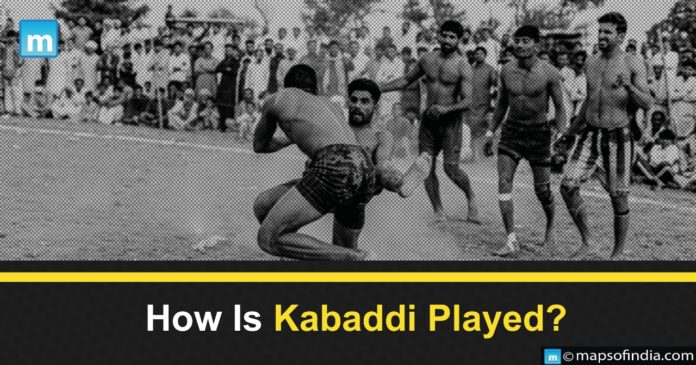Kabaddi is a quick, intense, and muscular sport that makes for a fantastic exhibition, as seen by the growing global fame of Pro Kabaddi. The franchise-based Kabaddi tournament began in 2014 in India.
Here is a simple guide on how to play Kabaddi for everyone new to the sport
The runtime of a Kabaddi game
A Kabaddi match lasts 40 minutes (two halves of 20 minutes each). The game begins with a coin flip between the two groups, with the winner deciding to raid or guard first. Each side has two timeouts in each half.
How many people play Kabaddi?
In a Kabaddi game, each side has seven players. In addition, teams may have 3 to 6 replacement individuals on the bench.
Gameplay
A Kabaddi match begins with one squad invading half of the opposing team. During an assault, a raider from the attacking side approaches the other team’s side while shouting kabaddi, commonly known as canting. The raider’s goal is to touch or grab as many opposing players as antis or guards as possible before reaching the midline and resuming their cant under one breath.
Simultaneously, the defenders strive to prevent the attacker from retreating to his respective half by knocking or forcing him off the court. Teams take turns raiding each other, and the team with the most points at the end of the match wins.
How are Kabaddi scores awarded?
During a raid, an attacker has two ways to gain points. He can attempt to score touchpoints by tagging one or more opposing players and successfully escaping into his side before breaking the cant. All antis and defenders marked during the raid must leave the mat if touchpoints are earned. Raiders receive as many contact points as the number of players they touched during an assault.
On the other hand, the ousted players can be resurrected and restored into action if a raider from their squad earns touchpoints on the other team during a future raid or if their team successfully raids the opposing raider as the match advances. Revivals occur in the same order as knockouts.
A raider is also eliminated from the play if they are captured by opposing guards during a raid. In contemporary kabaddi, a successful tackle gets the defending side 1 point. These points are sometimes referred to as tackle points. If a raider breaks his cant throughout a raid, he is also eliminated, and the defensive team scores a point.
If a team eliminates all seven of the other team’s players, they gain two additional points throughout all out or Lona. When a team achieves a Lona, all opposing team members are resurrected and play restarts. Remember that if a raider can exceed the baulk line, they can safely return without being eliminated. On the other hand, a safe passage by just clearing the baulk line does not result in scores or revivals and is referred to as an empty raid.
Bonus points are another option for raiders to earn. To get a bonus point, an invader must land 1 foot beyond the bonus line while the following foot is in the air. However, bonus points are only available when the defensive side has six or more individuals on the mat. Also, if a defender or raider walks over the boundary line during the whole phase of play, they are dismissed, and the opposing team receives a point and a revival.
The lobby is likewise out of bounds until a defence comes into contact with the raider, referred to as a struggle. Walking onto the lobby before a fight begins incurs the same punishment as stepping outside the mat’s borders.
Take a look at three different situations:
If a playoff Kabaddi match finishes in a draw, the victor is determined by a seven-minute miniature match with two halves.
If extra time does not produce a champion, the game is determined by a spontaneous Golden Raid, where the baulk line springs up to the baulk line.
If a tie follows the Golden Raid, the winner will be chosen by a coin flip.




